
Great Wall of China: Length, History, Map, Why and When Built It
The Great Wall of China is one of the greatest achievements in human history. It crosses huge plains, tall mountains and expansive deserts over thousands of kilometres across northern China. This massive structure has a long and fascinating history that has captured the imagination of travelers, historians and adventurers for centuries.
Table of Contents
In this article, we will explore its total length, where the Great Wall of China is located and the timeline of its construction. We will also dive into the reasons behind building the Great Wall and its lasting significance. These insights will help you understand why this wall remains a powerful symbol of China’s culture and resilience.
The Length of The Great Wall
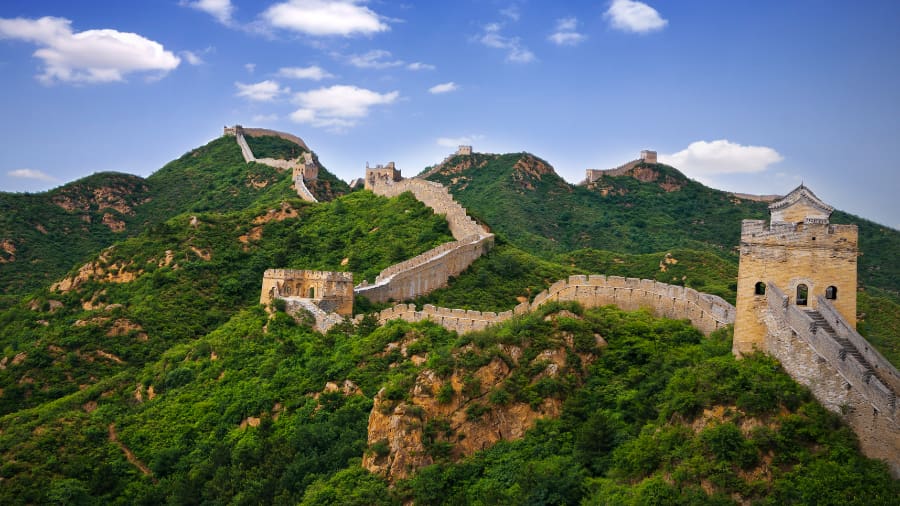
According to comprehensive surveys by China’s State Administration of Cultural Heritage, the total length of the Great Wall of China is approx. 21,196 kilometers (13,171 miles). This includes walls, canals and natural barriers such as rivers and mountains that were incorporated into the defensive system.
This astonishing length makes the Wall not only the longest man-made structure in the world but also a vivid demonstration of ancient China’s military strategy and architectural brilliance.
How Old Is The Great Wall of China?
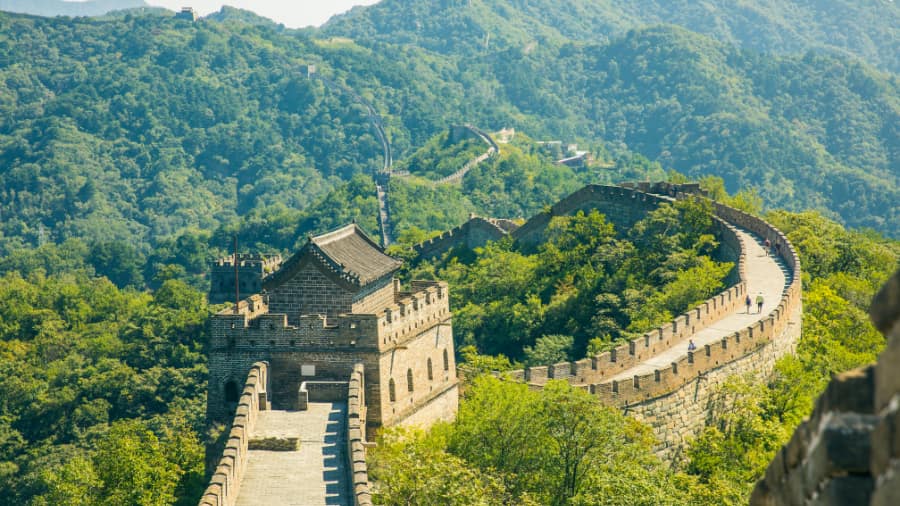
The origins of the Great Wall of China stretch back more than 2,700 years, to the Warring States Period (475–221 BCE), when individual states built fortifications to defend their territories. These early segments laid the groundwork for what would later become one of the most iconic structures in human history.
History of The Great Wall of China
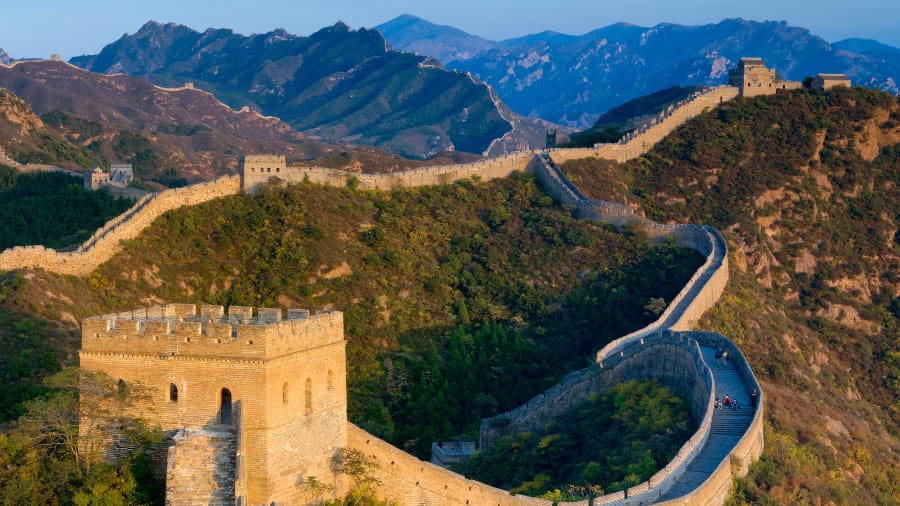
The Great Wall of China History is a saga of ambition, warfare, and cultural evolution. Here is an extensive review of its historical evolution –
- Early Walls (770-221 BC):
Before the unification of China, individual states built walls to defend their domains from competing states and nomadic tribes. These early efforts began during the Spring and Autumn Period (771–476 BC) and the Warring States Period (475–221 BC). - Qin Dynasty (221–206 BCE):
Qin Shi Huang, the first emperor of a united China has been given credit for starting the construction of the Great Wall. He connected existing walls to form a more unified defence against northern nomadic tribes, particularly the Mongols. This was when the Great Wall of China was first built as one wall but most of it has faded over time. - Han Dynasty (206 BCE–220 CE):
During the Han Dynasty, the Great Wall was extended and strengthened to stretch over 8,000 kilometers from near Pyongyang in the east to Jade Gate Pass in the west. It was built mainly from tamped earth and wood to protect the Silk Road and secure China’s northern borders. - Northern Wei, Qi, and Sui Dynasties (386–618 CE):
During this period, the Northern Wei, Qi and Sui Dynasties worked on repairing and extending the Great Wall. Their goal was to protect their lands from nomadic groups like the Rouran and Turks. The Sui Dynasty even organized large building projects to strengthen the Wall but it put a lot of pressure on the economy. - Yuan Dynasty (1271–1368):
The Yuan Dynasty was the first time all of China was ruled by the Mongols who were not part of the Han Chinese majority. For over 1,500 years the Great Wall had helped protect Han China from northern invaders. But during the Yuan period work on the Wall stopped because China and Mongolia were under the same rule and there was no need for a border defense. - Ming Dynasty (1368–1644):
During the Ming Dynasty, the majority of the sections of the Great Wall were built or strengthened. The Ming used bricks and stone to create a strong wall with watchtowers, military stations and signal systems. During this time, the Great Wall of China was finished in its most evident shape, especially by the end of the 16th century. - Post-Ming Era:
After the Ming, the Qing Dynasty (1644–1912) saw less need for the wall due to their control over northern territory. Therefore, the wall had been ignored and started to break down. In the 20th century, especially after 1949 when the People’s Republic of China was formed, efforts began to restore the wall and it became a strong symbol of national pride.
Where Is The Great Wall of China Located?
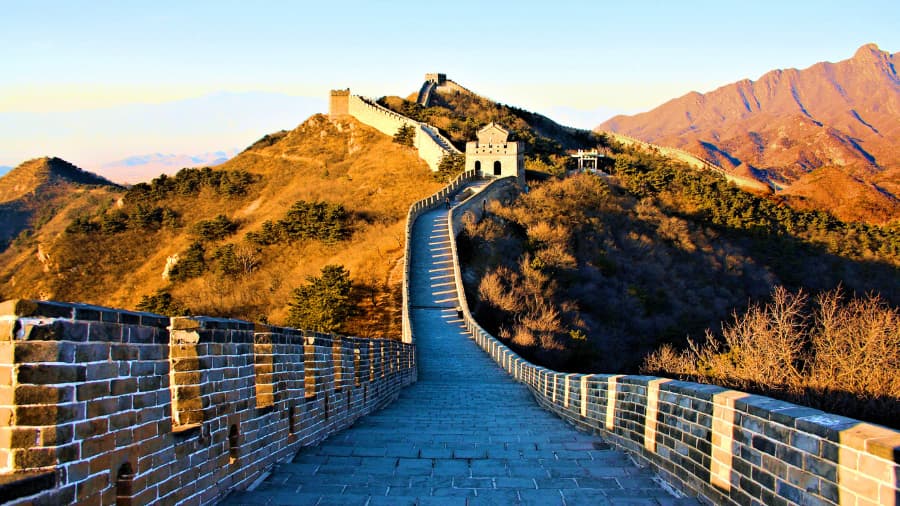
The Great Wall of China stretches across the vast northern region of the country, extending from the eastern shores of the Bohai Sea (part of the Yellow Sea) all the way to the western edges of the Gobi Desert. This immense defensive structure spans roughly 15 provincial-level areas, including Beijing, Liaoning, Shandong, Hebei, Henan, Tianjin, Shanxi, Shaanxi, Hubei, Ningxia, Jilin, Heilongjiang, Inner Mongolia, Gansu and Qinghai.
When Was The Great Wall of China Built and Finished?
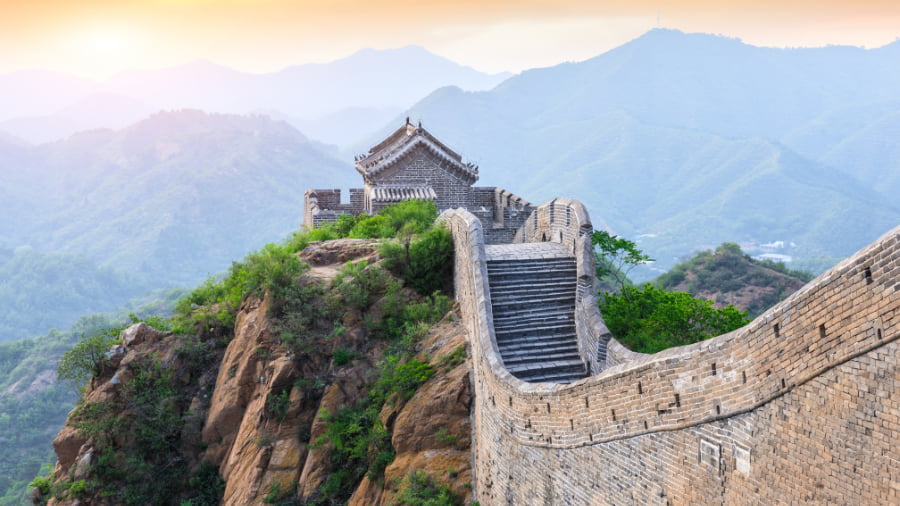
As the Great Wall of China timeline shows, there is no single definite answer to when the Great Wall of China was built and finished. The first parts of the Wall were built as early as the 7th century BC by different dynasties contributing at various points. The most important early effort happened in 221 BCE when Emperor Qin Shi Huang united these walls into one system.
However, the Great Wall was never really “finished” all at once. Instead, it was built, expanded, and repaired numerous times over a number of years. The most complete and lasting sections we see today were built during the Ming Dynasty (between 1368 and 1644). These sections are about 400 to 650 years old. Over time, different rulers added to the Wall, making it longer and stronger with each generation.
How Tall is The Great Wall of China?
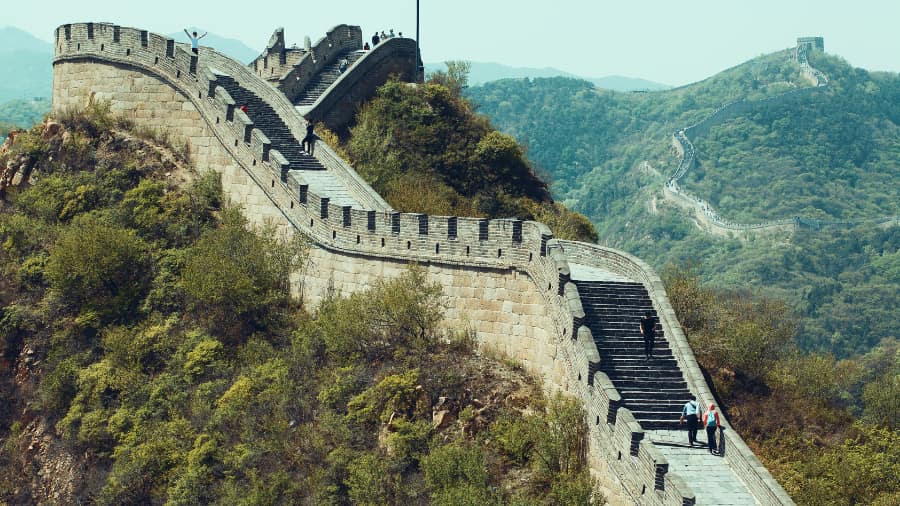
The height of the Great Wall of China varies depending on the location and the period in which it was built. On average, the wall stands around 7.8 meters (25.6 feet) tall — roughly 2 to 3 times the height of an average human.
The most well-preserved sections, especially those constructed during the Ming Dynasty, typically range between 5 to 8 meters (16 to 26 feet) in height. Some of the watchtowers built along the Wall rise even higher, reaching up to 12 meters (39 feet).
This impressive scale ensured that the Wall served not just as a barrier, but as a commanding defense structure visible for miles, effectively deterring invaders and allowing guards a strategic vantage point.
How The Great Wall of China Was Built?
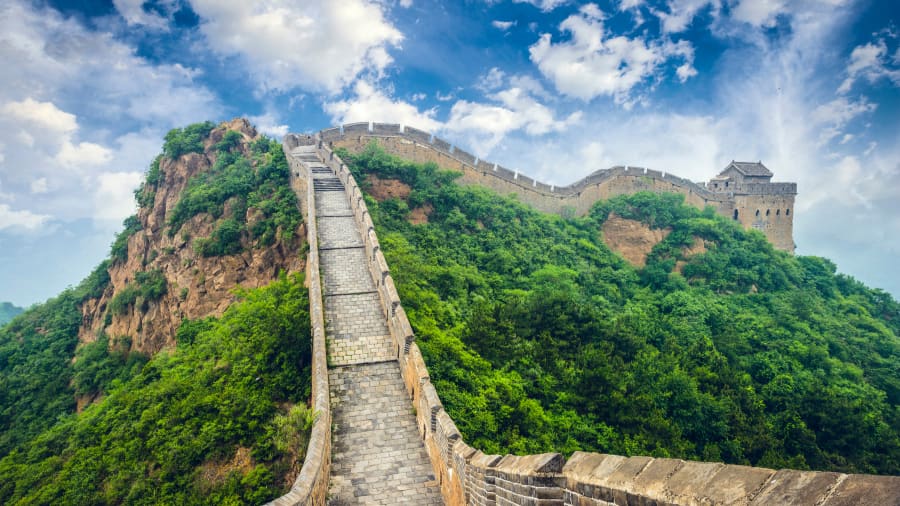
The Great Wall of China was built through immense effort, skill and sacrifice. The numerous people which include peasants, soldiers and prisoners worked under severe conditions. Many people died during construction, and others were buried within the Wall itself in honour of the immense human cost of this massive endeavour.
The builders used materials available nearby, such as stone, packed earth, sand, and bricks. These materials were carried by hand, ropes, carts, and sometimes even goats in difficult areas.
However, the Great Wall served as much more than a defensive structure. It was a well-planned military defense system with different components working together –
- The main wall served as the physical barrier with battlements for protection.
- Watchtowers appeared every 500 meters or less. These towers were lookout points that allowed defenders to spot enemies and shoot arrows.
- Fortresses guarded important passes and weak spots. Places like Shanhai Pass and Jiayu Pass had strongholds with many archery windows and thick gates designed to withstand attacks.
This combination of tough materials, skilled construction, and strategic design made the Great Wall a powerful symbol of ancient China’s resilience and determination.
Conclusion
The Great Wall of China is a lasting symbol of China’s strength, ambition, and innovation. Its vast length, ancient stories, and the hard work that went into building the Great Wall remind us of what people can achieve when they come together for a common purpose.
From the earliest walls made of earth to the strong stone sections built during the Ming Dynasty, the Wall shows China’s long journey to protect its land and people. It represents the powerful spirit of a civilization that worked hard to guard its culture and land.
Today, the Great Wall is a UNESCO World Heritage Site and a major attraction for people from all over the world. It helps us understand the past, and connects us to a culture that has shaped the world in so many ways. Stay connected with DDelhi for more amazing journeys to historic places and travel stories from around the world.



